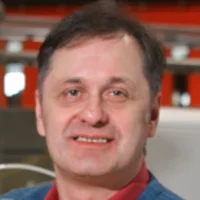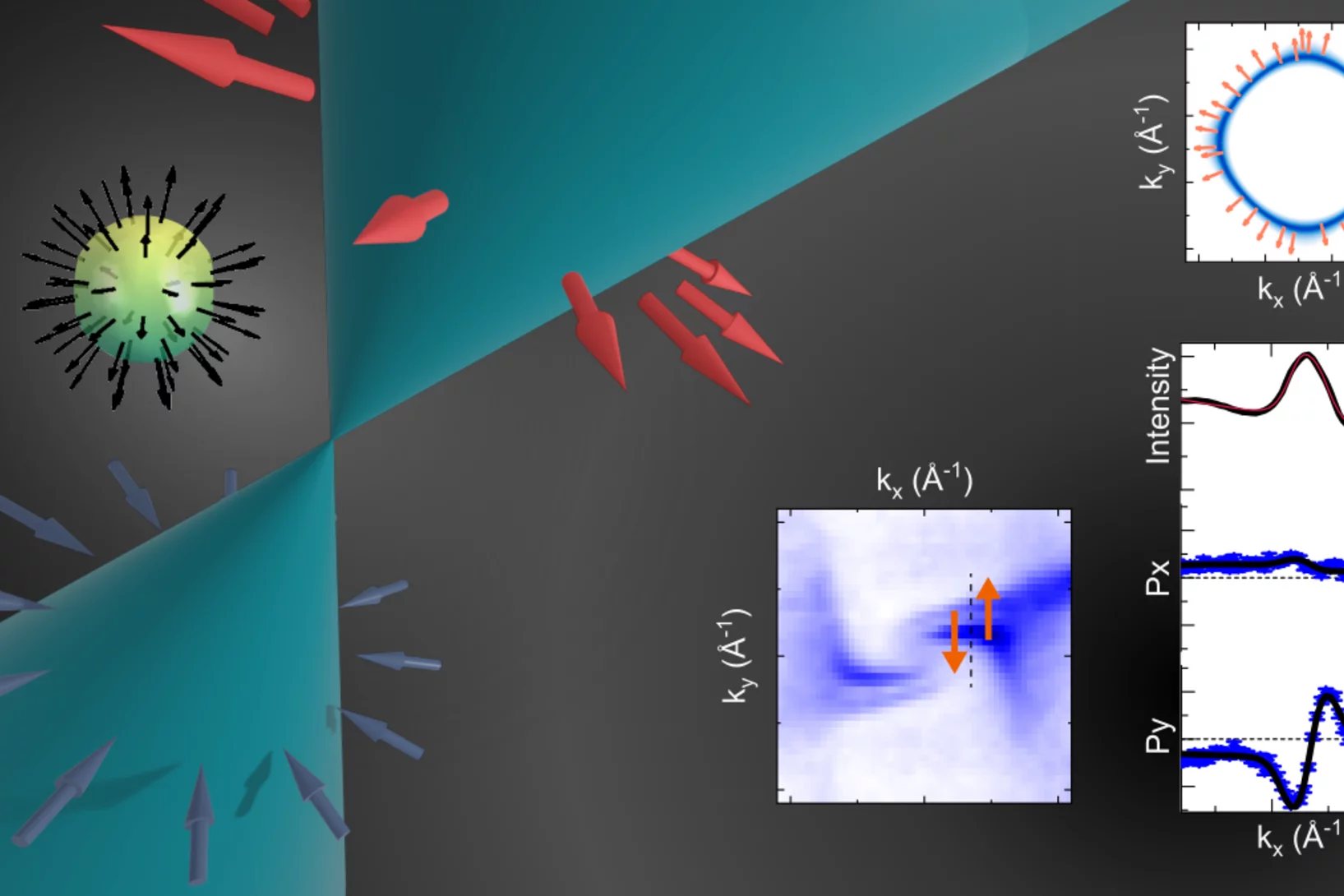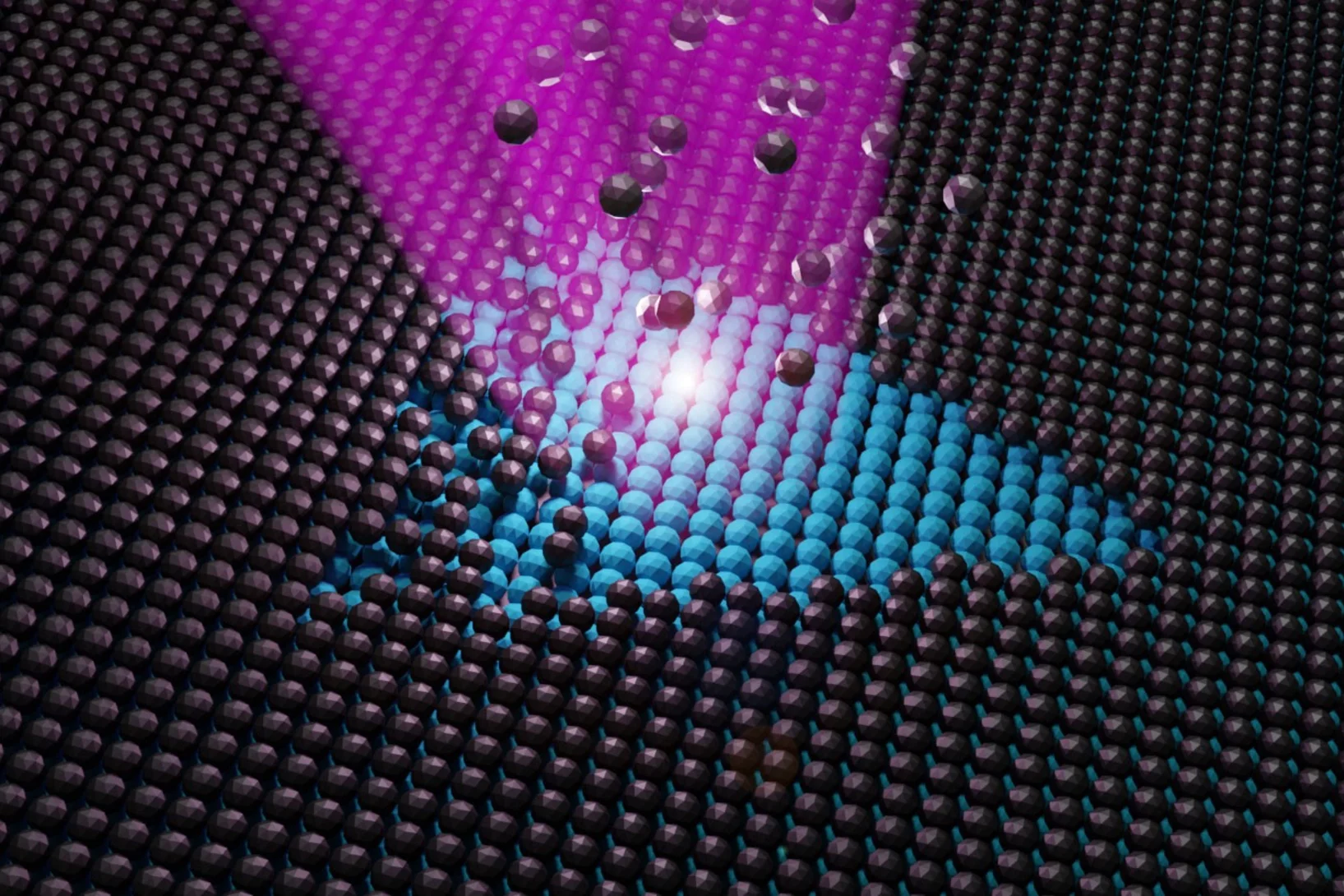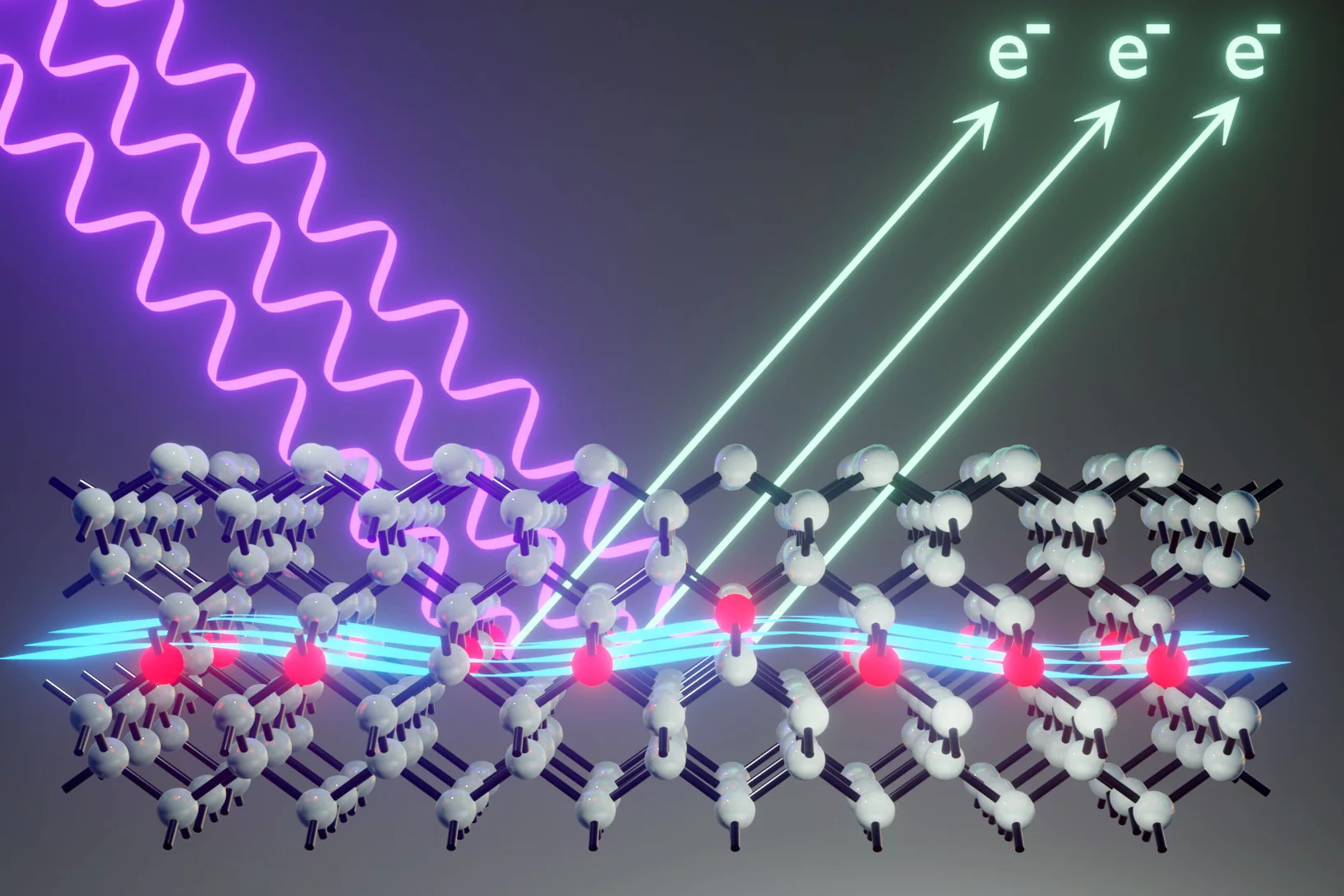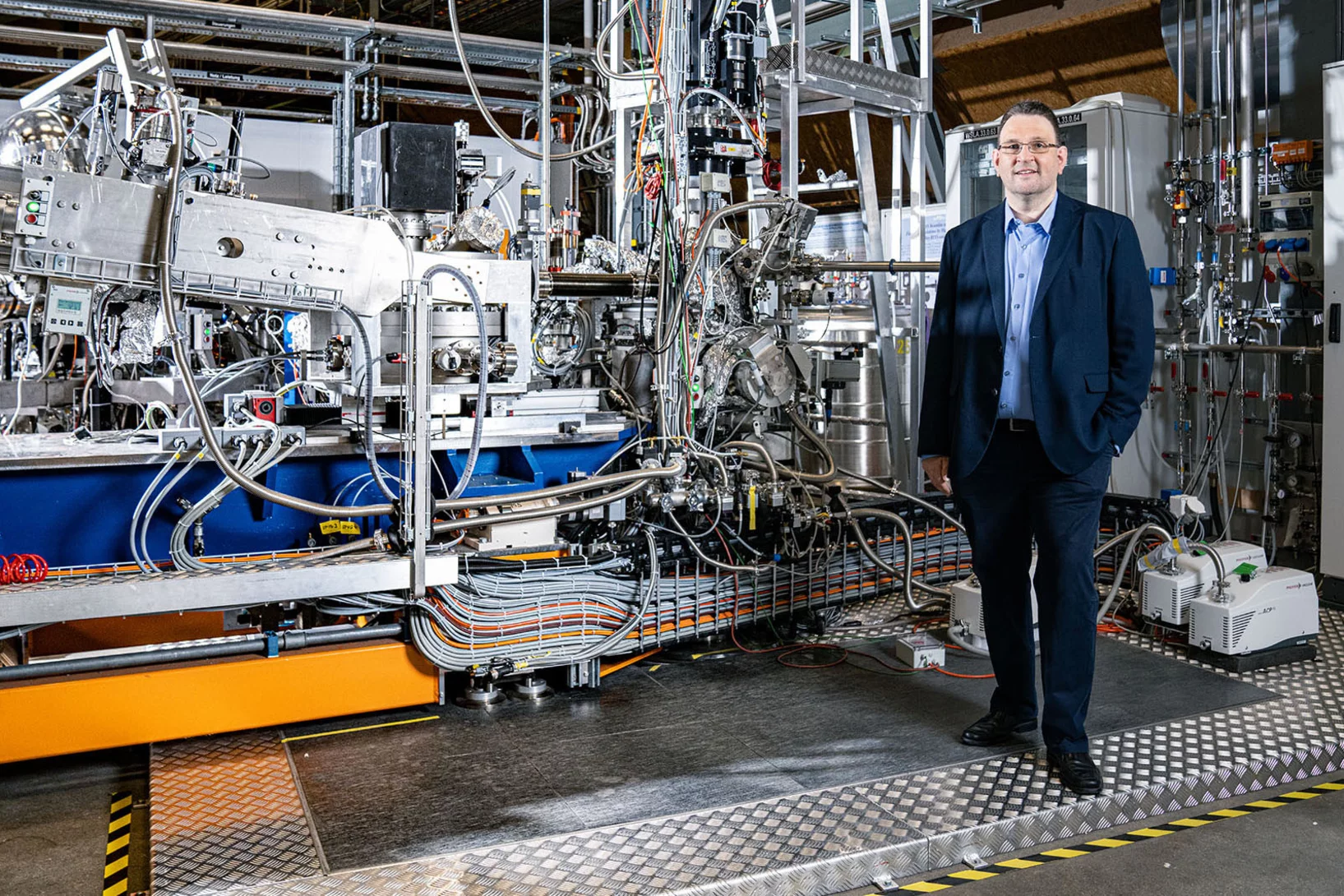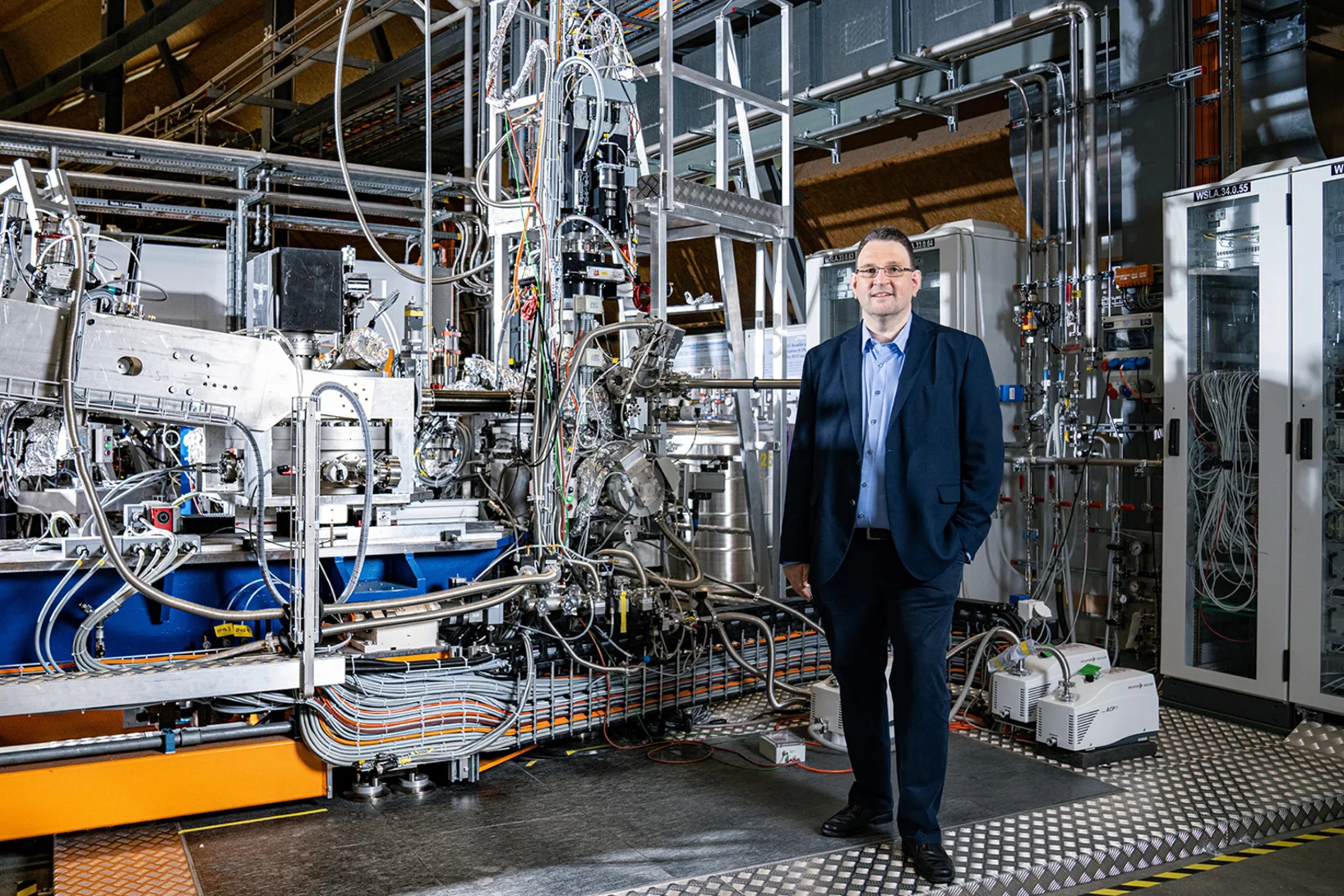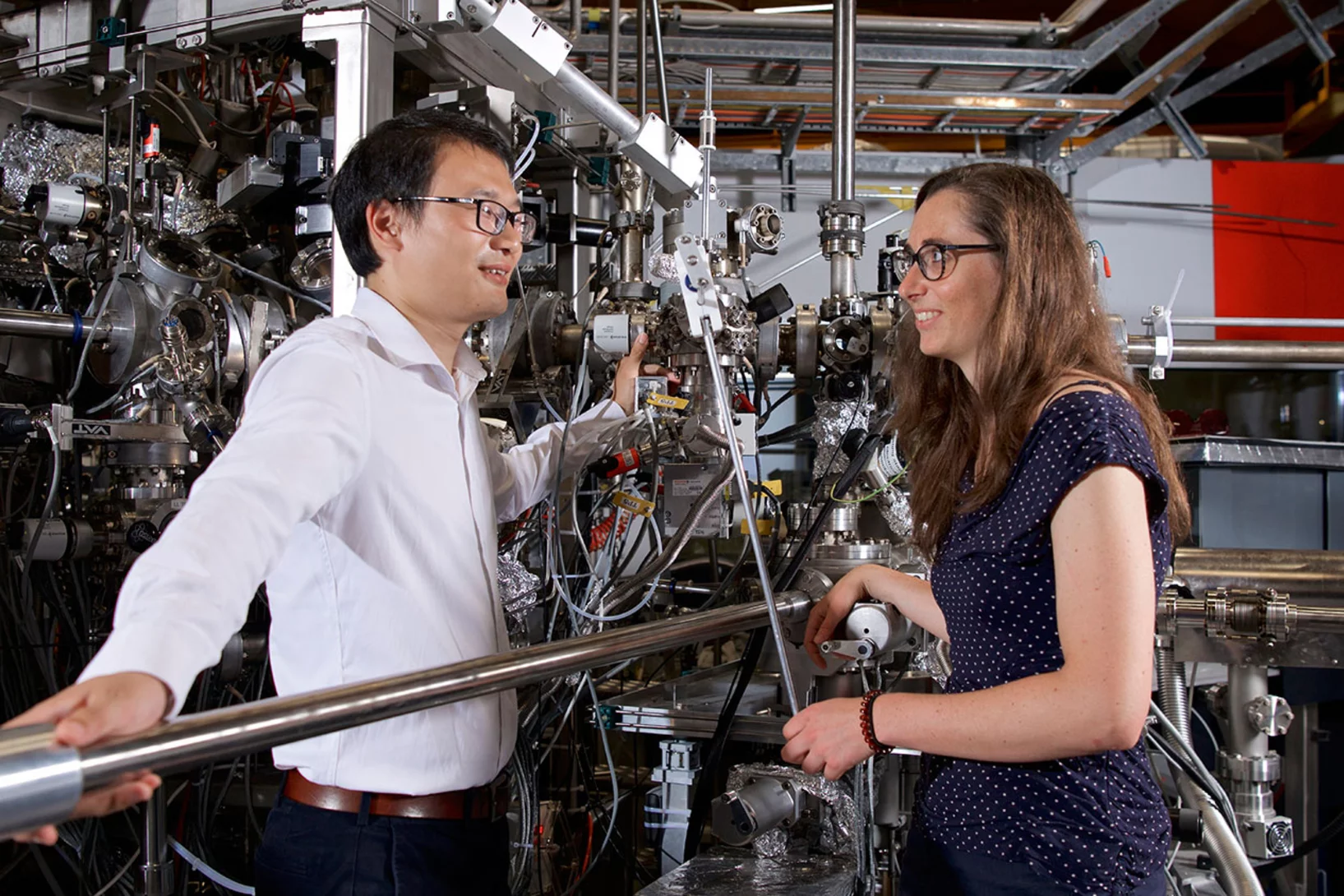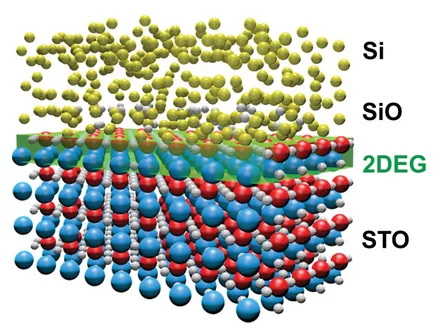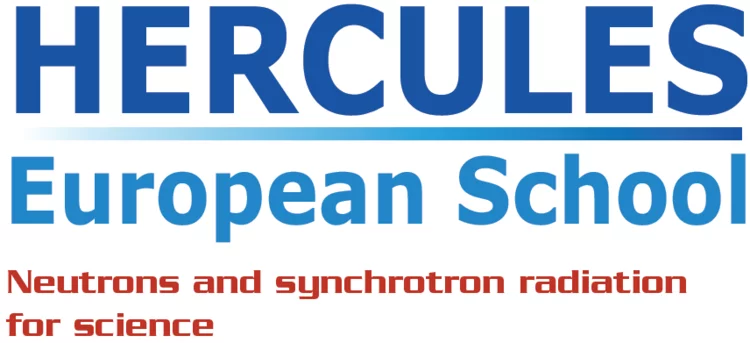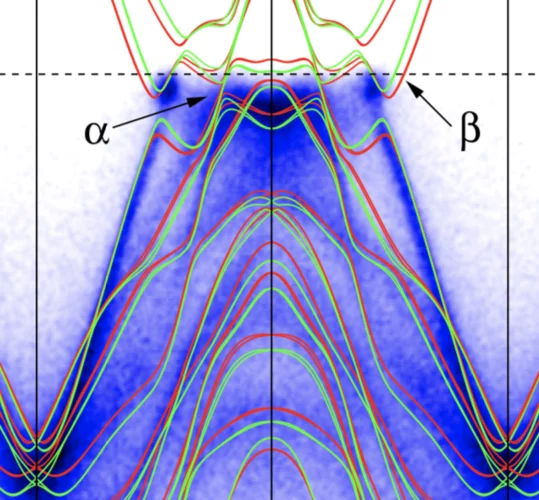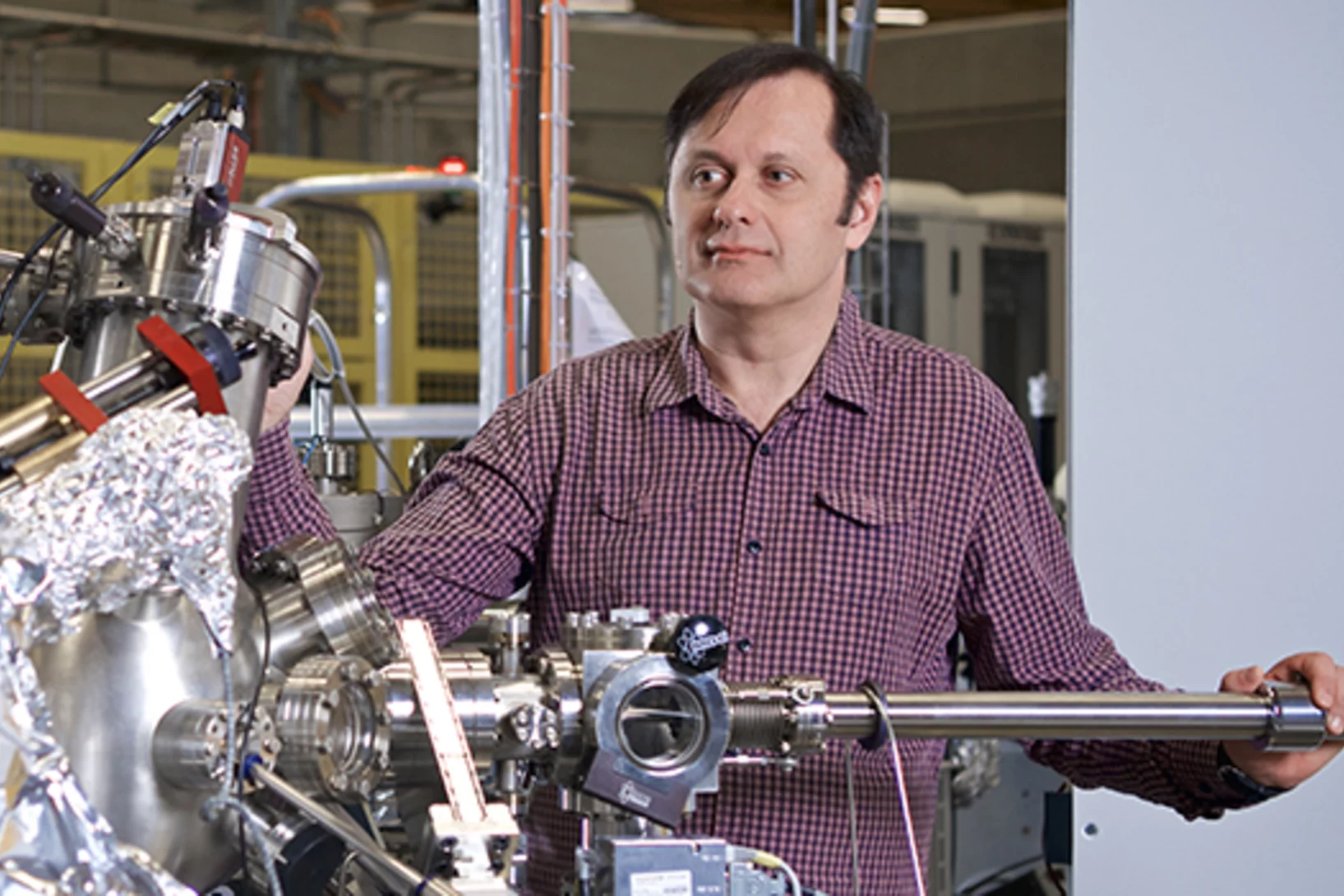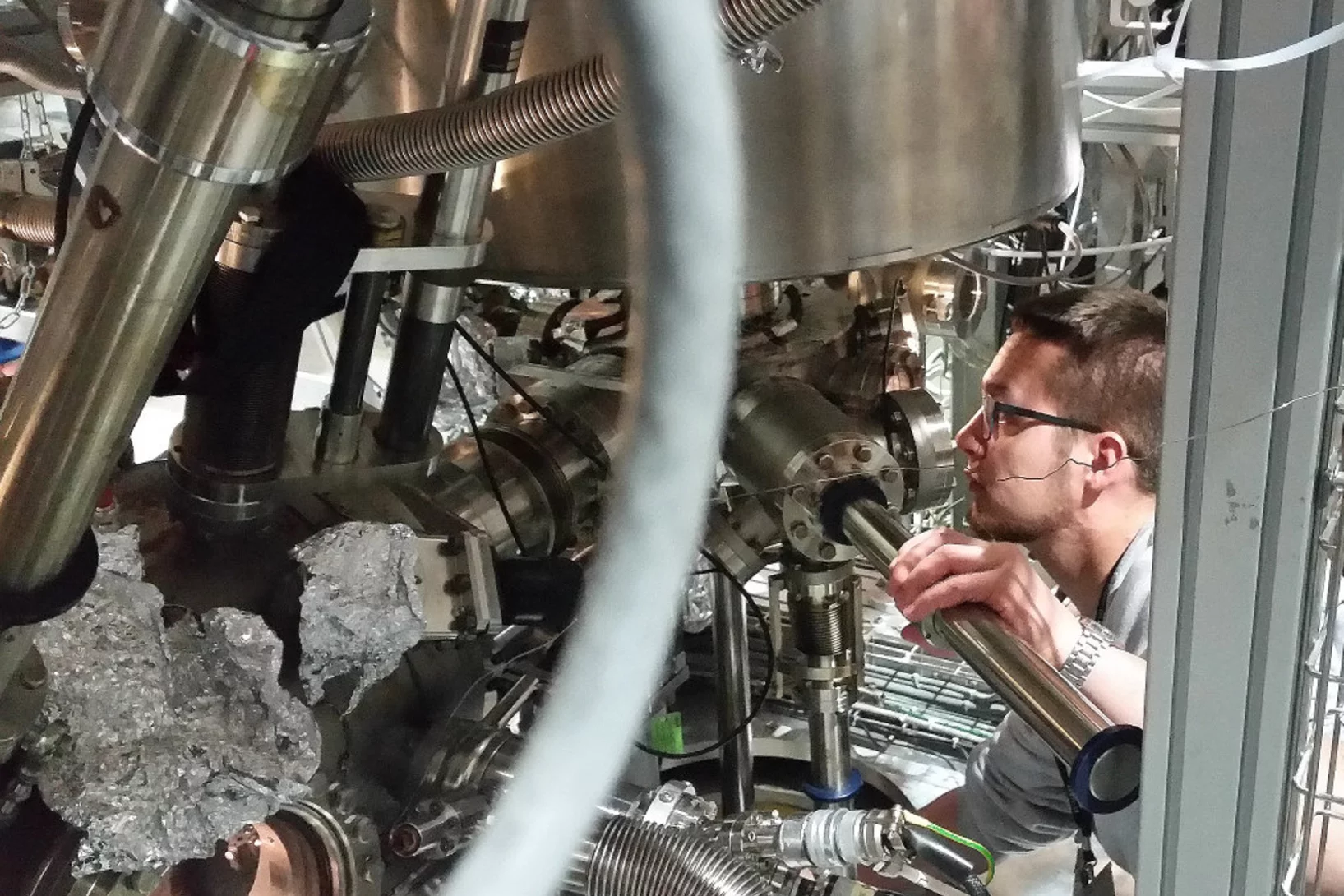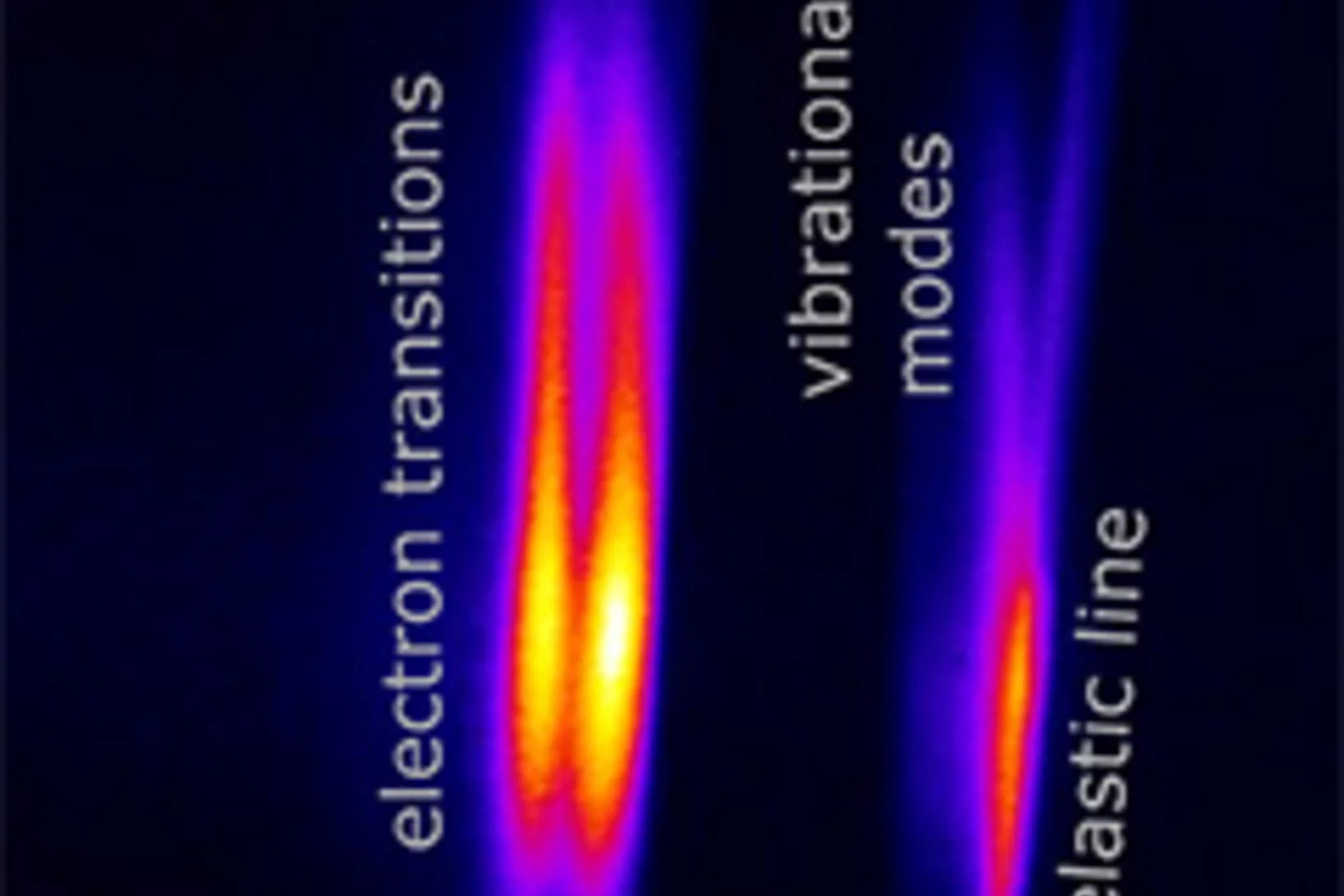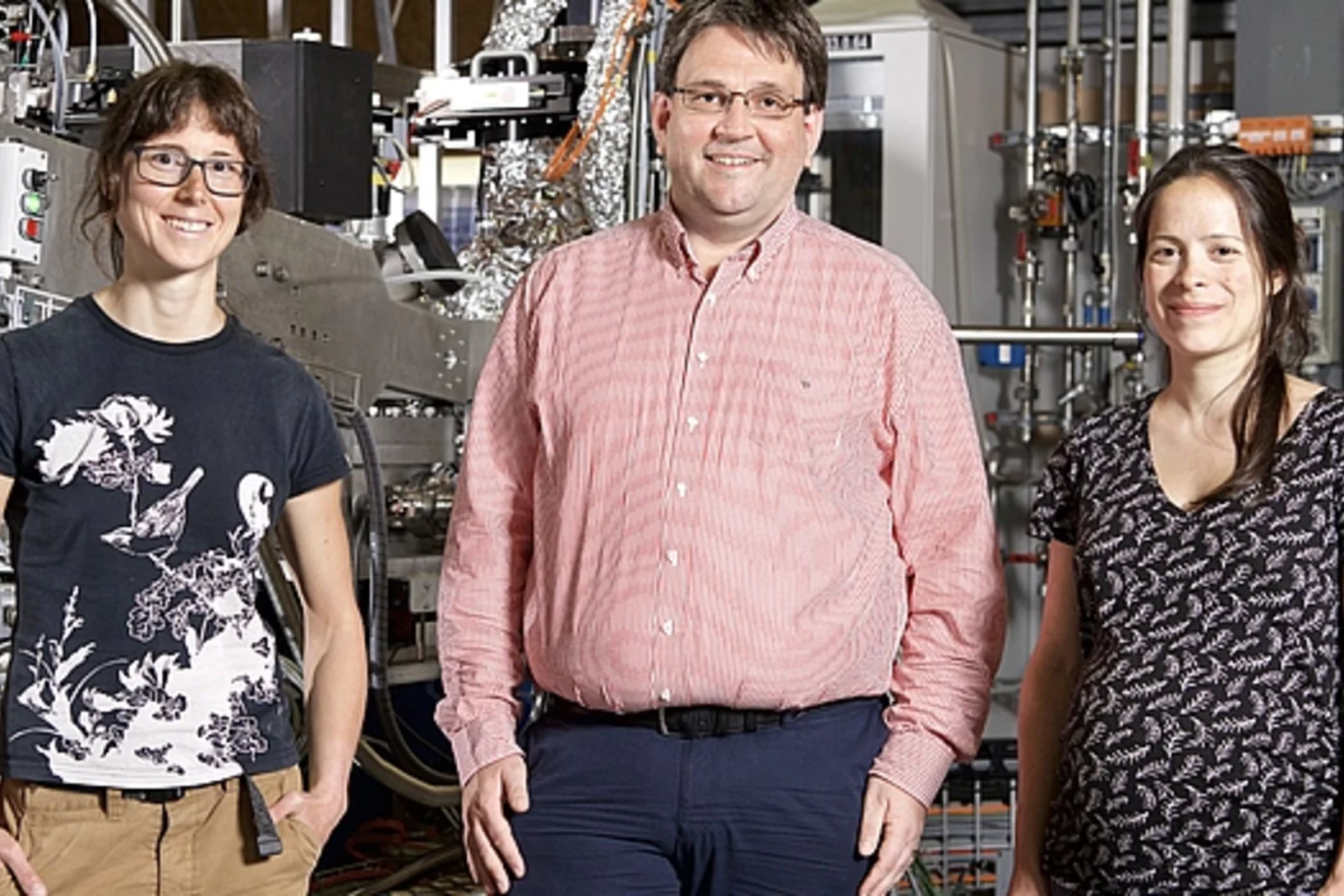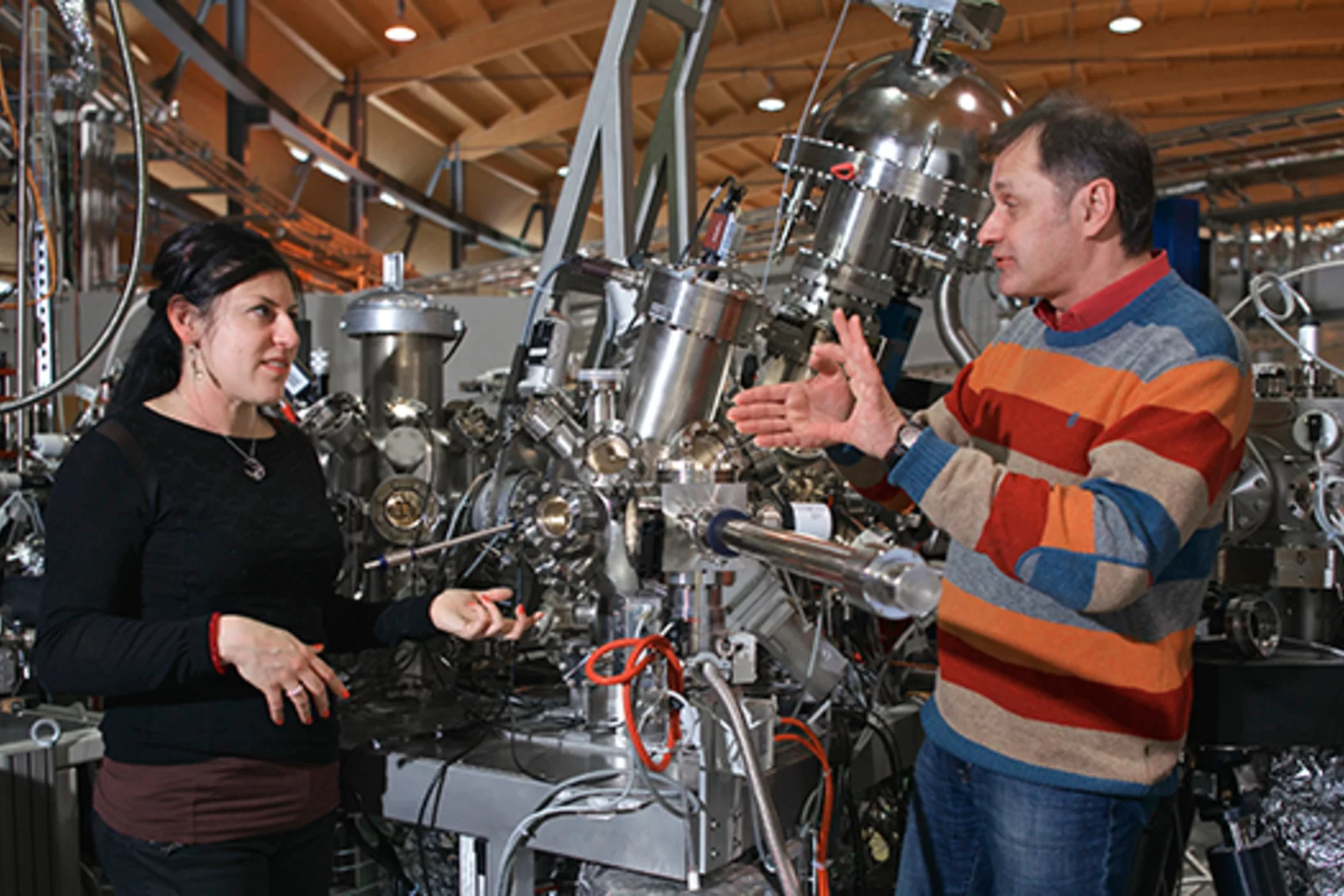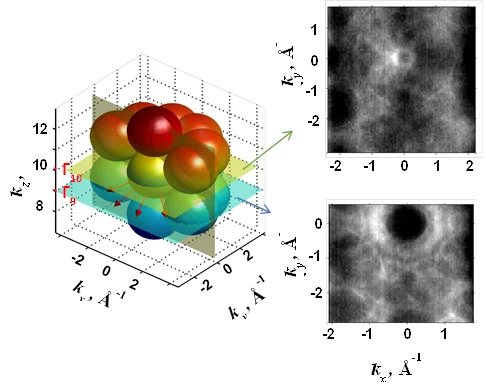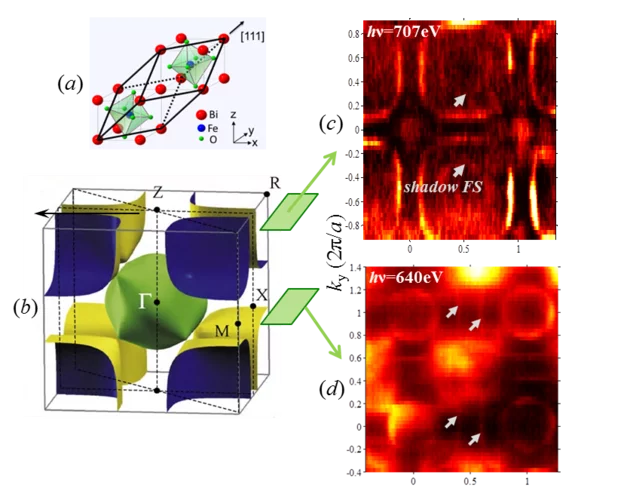Weyl spin-momentum locking in a chiral topological semimetal
Spin–orbit coupling in noncentrosymmetric crystals leads to spin–momentum locking – a directional relationship between an electron’s spin angular momentum and its linear momentum. Isotropic orthogonal Rashba spin–momentum locking has been studied for decades, while its counterpart, isotropic parallel Weyl spin–momentum locking has remained elusive in experiments. Theory predicts ...
Extreme ultraviolet for scalable silicon quantum devices
Experiments at the Swiss Light Source (SLS) show the potential of extreme ultraviolet light (EUV) to make the building blocks of scalable quantum computers.
Unveiling ultra-thin electron liquids in silicon
Soft X-rays enable scientists to visualise non-invasively the electronic properties of ultra-thin dopant layers buried within semiconductor wafers.
Wasser besser verstehen
Potenzialkarte von Wassermolekülen erstellt
Halbleiter erreichen die Quantenwelt
Mit einem Supraleiter aufgemotzt: Die Halbleitertechnologie könnte eine neue Wendung erhalten, indem Quanteneffekte in Supraleitern ausgenutzt werden.
Die Physik in neuen Metallen verstehen
Forschende des PSI könnten gemeinsam mit internationalen Kollegen nun korrelierte Metalle für die Anwendung in der Supraleitung, Datenverarbeitung oder in Quantencomputern nutzbar gemacht haben.
Ein elektronisches Material massschneidern
Forschende am PSI haben ein Material untersucht, das sich für zukünftige Anwendungen in der Datenspeicherung eignen könnte. Mit einem Trick haben sie die Kristallstruktur ihrer Probe gezielt verzerrt und dabei vermessen, wie dies die magnetischen und elektronischen Eigenschaften beeinflusst.
Weyl-Fermionen in einer weiteren Materialklasse entdeckt
Eine besondere Art von Teilchen, sogenannte Weyl-Fermionen, waren bislang nur in bestimmten nicht-magnetischen Materialien gefunden worden. Jetzt aber haben PSI-Forschende sie erstmals auch in einem besonderen paramagnetischen Material experimentell nachgewiesen.
Neuartiges Material zeigt auch neue Quasiteilchen
Forschende des PSI haben an der Synchrotron Lichtquelle Schweiz SLS ein neuartiges kristallines Material untersucht, das bislang nie gesehene elektronische Eigenschaften zeigt. Unter anderem konnten sie eine neue Sorte Quasiteilchen nachweisen: sogenannte Rarita-Schwinger-Fermionen.
X‐Ray Writing of Metallic Conductivity and Oxygen Vacancies at Silicon/SrTiO3 Interfaces
Lithography‐like writing of conducting regions at the interface between SrTiO3 and amorphous Si using X‐ray irradiation opens ways for spatially controlled functionalities in oxide heterostructures.
HERCULES school 2019 at SLS
In the week of April 1-5 PSI welcomes 20 PhD students and postdocs taking part in the European HERCULES 2019 school on Neutron and Synchrotron Radiation. They will attend lectures and perform two days of practical courses at several beam lines of the Swiss Light Source.
Evidence of a Coulomb-Interaction-Induced Lifshitz Transition and Robust Hybrid Weyl Semimetal in Td-MoTe2
Using soft x-ray angle-resolved photoemission spectroscopy we probed the bulk electronic structure of Td-MoTe2. We found that on-site Coulomb interaction leads to a Lifshitz transition, which is essential for a precise description of the electronic structure. A hybrid Weyl semimetal state with a pair of energy bands touching at both type-I and type-II Weyl nodes is indicated by comparing the experimental data with theoretical calculations.
Auf dem Weg zu neuen Leistungstransistoren
Von einem neuartigen Leistungstransistor aus Galliumnitrid verspricht sich die Elektronikindustrie erhebliche Vorteile gegenüber derzeit eingesetzten Hochfrequenztransistoren. Doch noch sind eine Vielzahl grundlegender Eigenschaften des Materials unbekannt. Forschende am Paul Scherrer Institut PSI haben nun erstmals den Elektronen im angesagten Transistor beim Fliessen zugeschaut. Sie nutzten dafür eine der weltweit besten Quellen für weiches Röntgenlicht an der Synchrotron Lichtquelle Schweiz des PSI.
HERCULES at the Swiss Light Source
In the week of March 18-23 PSI welcomes 20 PhD students and postdocs taking part in the HERCULES 2018 school on Neutron and Synchrotron Radiation. They will attend lectures and perform two days of practical courses at several beam lines of the Swiss Light Source.
A new RIXS analyzer scheme based on transmission zone plates
PSI scientists have developed a new type of X-ray optics that allows for analyzing the emission in resonant inelastic x-ray scattering (RIXS) experiments. The new approach combines the energy dispersion with imaging capabilities. In a collaborative effort with research groups from Göttingen and Hamburg, two new classes of RIXS experiments, energy mapping and RIXS imaging, have been demonstrated.
Wahlweise elektrisch leitend oder isolierend
Das Material Neodym-Nickel-Oxid ist je nach seiner Temperatur entweder ein Metall oder ein Isolator. Die Möglichkeit, diesen Übergang elektrisch zu steuern, macht das Material zu einem möglichen Kandidaten für Transistoren in modernen elektronischen Geräten. Mittels einer ausgeklügelten Weiterentwicklung der Röntgenstreuung konnten Forschende am Paul Scherrer Institut PSI nun die Ursache dieses Übergangs nachvollziehen: Rund um die Sauerstoffatome sortieren sich die Elektronen um.
Schwerfälliger Stromfluss könnte Weg zu energiesparenden Computern weisen
Computer und andere elektronische Geräte haben heute einen beträchtlichen Anteil am weltweiten Energieverbrauch. Mit den heute genutzten Technologien lässt sich dieser Verbrauch aber kaum senken, sodass die Chips in den energiesparenden Geräten der Zukunft aus neuartigen Materialien bestehen werden. Neueste Forschungsergebnisse aus dem Paul Scherrer Institut PSI geben Hinweise darauf, wie man zu solchen Materialien kommen könnte.
Fermi states and anisotropy of Brillouin zone scattering in the decagonal Al–Ni–Co quasicrystal
Quasicrystals (QCs) are intermetallic alloys where excellent long-range order coexists with lack of translational symmetry in one or more dimensions. These materials have a high potential in application as a material for a solar cells, hydrogen storage applications, heat insulating layers, and others.
Concept of a multichannel spin-resolving electron analyzer based on Mott scattering
The spin of electron plays a crucial role in many physical phenomena, ranging from the obvious example of magnetism, via novel materials for spintronics applications, to high-temperature superconductivity. Spin- and angle-resolved photoelectron spectroscopy (SARPES) gives the most direct access to the spin aspects of the electronic structure, but the one-channel detection principle of all presently available SARPES spectrometers severely limits their efficiency. A team of Swiss and Russian scientists has developed a revolutionary concept of a multichannel electron spin detector based on Mott scattering as the spin selective process and imaging-type electron optics.
Fermi Surface of Three-Dimensional La1−xSrxMnO3 Explored by Soft-X-Ray ARPES: Rhombohedral Lattice Distortion and its Effect on Magnetoresistance
A research team led by scientists from the Swiss Light Source has for the first time established three-dimensional (3D) electronic structure of the perovskite compound La1−xSrxMnO3 connected with its colossal magnetoresistance. Instrumental for this study has been the use of the new experimental technique of soft-x-ray ARPES, available at the ADRESS beamline, with its intrinsically sharp definition of 3D electron momentum.

